If you’re a bird lover considering adding a Kakariki to your aviary, you may wonder what other bird species can coexist harmoniously with these cheerful and social birds. While Kakarikis can be friendly and tolerant of other bird species, not all birds are compatible as companions. This guide will explore the different bird species that can live with Kakarikis and provide insights into their ideal living conditions.
What birds can live with kakarikis? Kakarikis can cohabit with budgies, lovebirds, cockatiels, canaries and finches. These birds share a similar temperament, making it easier for them to coexist. However, monitoring their interactions and ensuring a spacious environment is essential, as individual personalities and territorial behaviours can vary. Introducing them slowly and under supervision is key to a harmonious relationship.
Key Takeaways:
- Kakarikis can live harmoniously with other bird species, but careful consideration is required when selecting suitable companions.
- Understanding Kakarikis’ social and physical characteristics is essential before considering other bird species as companions.
- Budgerigars, Lovebirds, Cockatiels, canaries, and finches are popular bird species compatible with Kakarikis.
- Creating the right living environment, careful bird introductions, and ongoing monitoring are essential for maintaining a peaceful aviary.
Understanding Kakarikis: Social and Physical Characteristics
Kakarikis are friendly and social birds that thrive on interaction with both humans and other birds. They are native to New Zealand and are known for their playful and active personalities.
As social creatures, Kakarikis are happiest when kept in pairs or small groups. They enjoy playing, exploring, and foraging together. Kakarikis tend to be friendly and adaptable when housed with other bird species, but it’s essential to choose compatible companions with similar temperaments and requirements.
Physically, Kakarikis are medium-sized parrots that typically measure 25cm in length from beak to tail. They have a green body with red facial feathers and distinctive yellow head plumes. Their wingspan ranges from 35cm to 45cm, and they can weigh between 70-120g.
Kakarikis are active birds that require regular exercise. They enjoy flying, climbing, and playing with toys, so providing them with ample space and opportunities for physical activity is vital.
Kakarikis tend to be gentle and non-aggressive when socialising with other bird species. However, they may become territorial if they feel threatened or stressed. It’s essential to monitor their behaviour and interactions with other birds carefully.
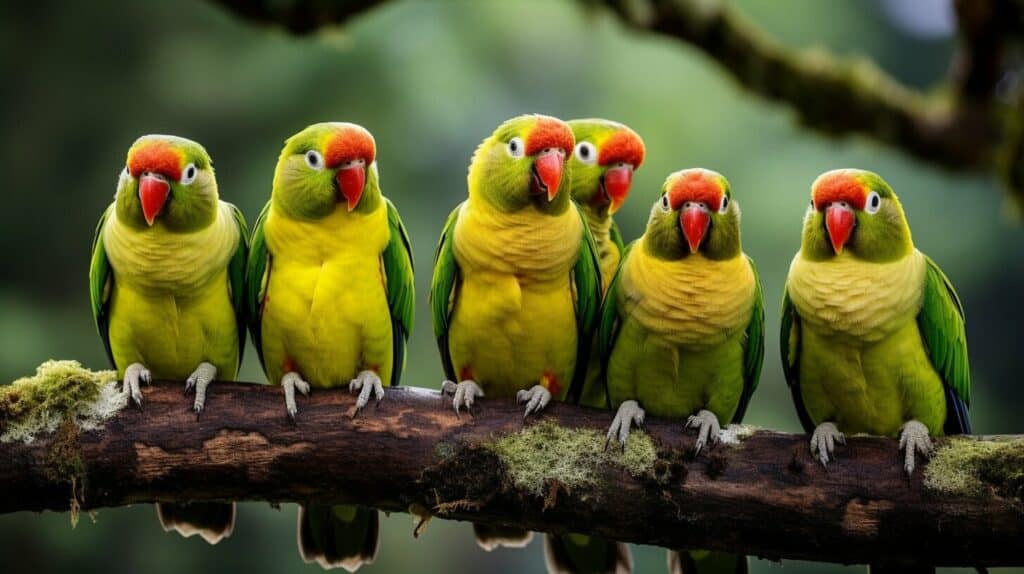
“When housed with other bird species, Kakarikis tend to be friendly and adaptable, but it’s essential to choose compatible companions with similar temperaments and requirements.”
Choosing Compatible Birds for Kakarikis
When selecting bird species to keep alongside Kakarikis, it is essential to consider their compatibility. Factors such as size, temperament, and dietary preferences must be considered to ensure a harmonious living environment for all birds.
Choosing birds with similar characteristics and behaviours to Kakarikis can increase the likelihood of successful integration. Birds with different needs and habits may cause unnecessary stress and conflict, leading to negative consequences for all involved.
Smaller, sociable, non-aggressive bird species are typically suitable companions for Kakarikis. Ideally, birds that enjoy similar food and environmental conditions can also be good choices. However, other factors such as noise level, activity level, and territorial behaviour should also be considered.
It is worth noting that each bird is unique and may have its own personality and preferences. Therefore, observing the birds’ behaviour upon introduction and providing adequate space and resources to minimise potential issues is important.
Consulting with a veterinarian or experienced avian specialist can also be helpful when selecting suitable bird companions for Kakarikis.
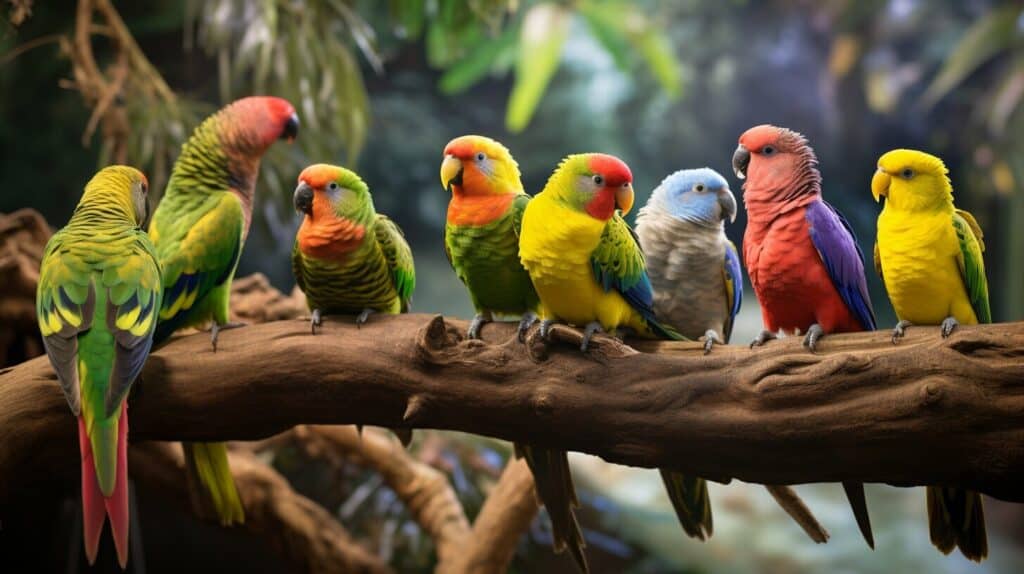
Popular Bird Companions for Kakarikis
Apart from their playful and energetic personalities, Kakarikis are widely known for their social nature. Therefore, choosing the right bird species to coexist with them is essential to ensuring their well-being. Here are some popular bird companions that can harmoniously live with Kakarikis:
| Bird Species | Compatibility with Kakarikis | Benefits of Companionship |
|---|---|---|
| Budgerigars (Budgies) | High | Budgies and Kakarikis have similar playful personalities and can form strong bonds. This companionship can also help with mental stimulation and prevent loneliness. |
| Lovebirds | Moderate | Canaries and Finches are calm and can provide a calming presence for the more energetic Kakarikis. Their beautiful singing can also add to the overall ambience of the aviary. |
| Cockatiels | High | Cockatiels are sociable and playful, making them excellent companions for Kakarikis. They can also act as a source of social stimulation and reduce stress levels. |
| Canary and Finch Species | Moderate to High | Canaries and Finches are calm and can provide a calming presence for the more energetic Kakarikis. Their beautiful singing can also add to the overall ambiance of the aviary. |
It’s important to note that compatibility between bird species can vary based on individual personalities and socialization techniques. Therefore, proper observation and gradual introduction are crucial for successful integration.
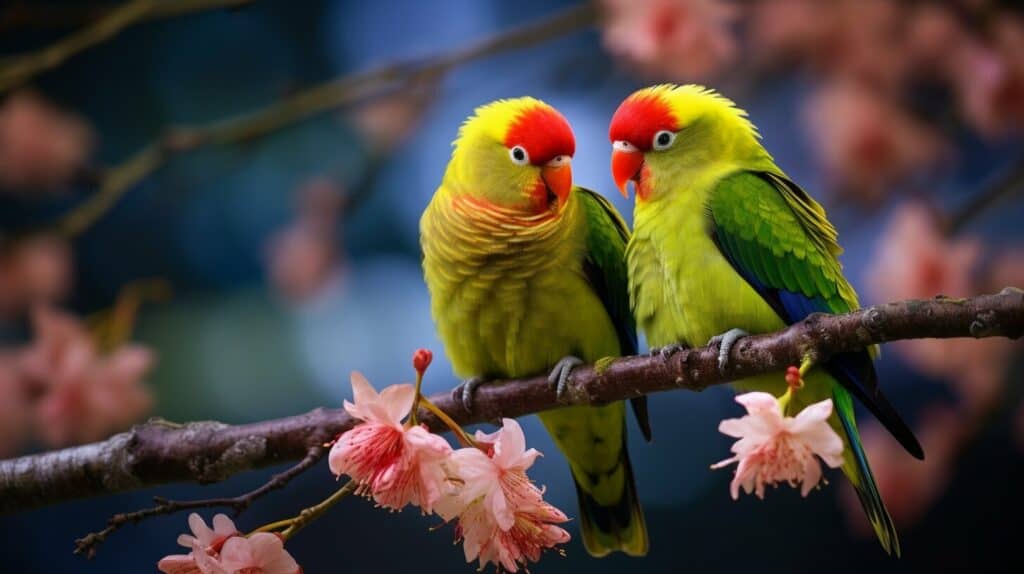
Budgerigars (Budgies)
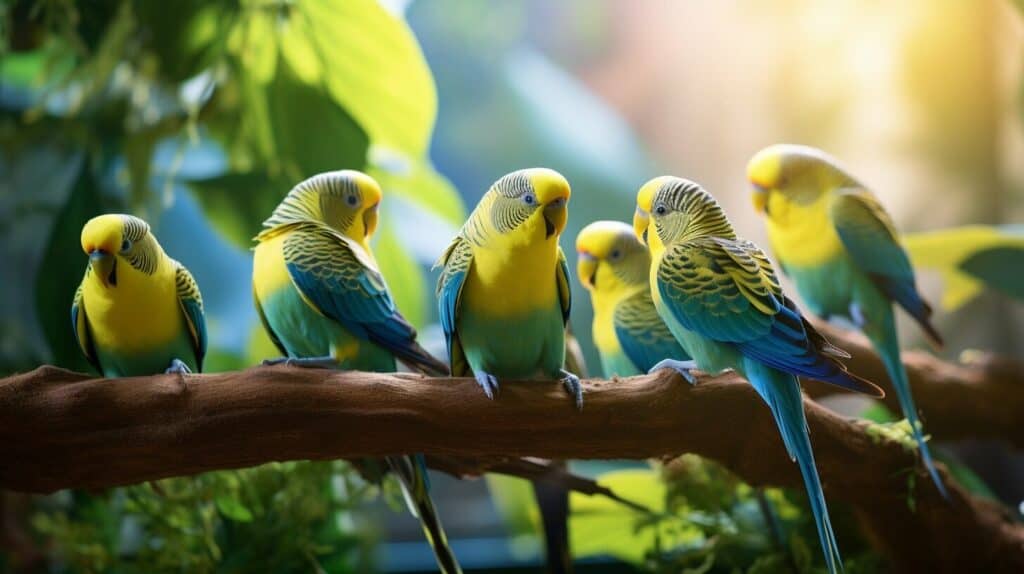
Budgerigars, also known as Budgies, are small parakeets popular as pets due to their playful personalities and attractive plumage. They are one of the most compatible bird species to keep with Kakarikis, as they are social and have similar dietary requirements.
When introducing Budgies to an aviary with Kakarikis, it is important to provide ample space for everyone to move around and fly. A minimum aviary size of 2m x 1m is recommended for a mixed-species aviary. Also, ensure that there are plenty of perches and toys to keep the birds entertained and stimulated.
Budgies are generally sociable birds that enjoy the company of others. They can form close bonds with their species but are comfortable with other bird species, including Kakarikis. However, some Budgies may display dominant behaviour, so monitoring the interactions and ensuring that no bird is being bullied or excluded is crucial.
When feeding Budgies in a mixed aviary, it is important to provide a varied diet that meets the nutritional requirements of both species. Budgies can be offered fresh fruits and vegetables, seeds, and commercial bird food. Kakarikis can eat similar food but require a higher protein diet. Providing a separate feeding station for each species can help prevent food competition and ensure everyone gets their fair share.
Lovebirds
Lovebirds are known for their affectionate nature towards their species, and with proper care and consideration, they can also live harmoniously with Kakarikis. These small parrots are highly social and thrive in pairs or groups, making them ideal companions for Kakarikis in a spacious aviary environment.
Providing ample space and resources for both species is important when choosing Lovebirds as companions for Kakarikis. A large aviary with multiple perches, feeding stations, and toys will ensure that each bird has plenty of personal space and opportunities for mental stimulation.
Introducing Lovebirds to a pre-existing Kakariki flock requires a gradual introduction and careful consideration. It’s recommended to start with short, supervised visits, gradually increasing the duration over time. Supervision during the entire process ensures the birds establish positive relationships without conflicts.
Lovebirds have a high-energy level and a keen interest in their surroundings, making them a great source of entertainment for Kakarikis. These birds are active climbers and enjoy playing with toys, which can help to keep the entire aviary stimulated and engaged.

Cockatiels
Cockatiels are known for their affectionate and friendly personalities, making them a popular choice for those looking to add a bird companion to their Kakariki aviary. These intelligent birds thrive on interactions with their feathered and human companions, and they have a playful disposition that can make them a joy to watch.
Cockatiels are relatively small birds that can easily coexist in smaller aviaries or cages with Kakarikis. They are also non-aggressive, making them unlikely to conflict with their Kakariki counterparts.
When introducing Cockatiels to a Kakariki aviary, it’s best to start with a single bird and gradually introduce other birds over time. This gradual approach allows the birds to become familiar with each other and establish their hierarchy without feeling threatened or stressed.
To ensure a harmonious living environment, pet owners should provide plenty of toys, perches, and nest boxes for their Cockatiels and Kakarikis to enjoy. This will allow them to engage in natural behaviours such as chewing, preening, and nesting.
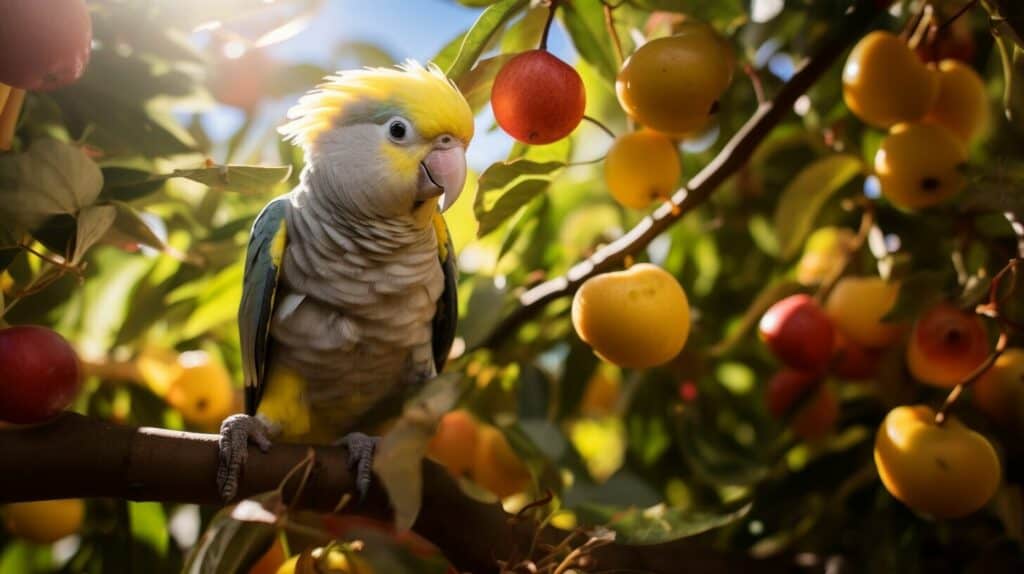
Cockatiels make great companions for Kakarikis due to their friendly personalities, non-aggressive nature, and compatibility with smaller living spaces. With proper introductions and environment enrichment, they can thrive and coexist peacefully in a shared aviary.
Canary and Finch Species
Canaries and finches are small, active birds that can be compatible with Kakarikis in an aviary setting. These bird species are popular due to their attractive appearance and delightful singing. Canaries are known for their bright plumage and melodious songs, while finches are popular for their charming personalities and social interactions.
Choosing the right species that can coexist peacefully is crucial when considering canaries and finches as companions for Kakarikis. Generally, canaries and finches of similar size and temperament are ideal choices. Small and passive species such as Zebra finches, Society finches and Gouldian finches can be perfect companions for Kakarikis as they are happy to coexist peacefully without causing conflicts.
It is important to note that canaries and finches have different dietary requirements than Kakarikis. They primarily feed on seeds, so providing them with separate feeders is a good idea. Additionally, Kakarikis tend to explore and play with small objects, so it is essential to ensure that any toys or accessories in the aviary are safe for all birds.
Overall, canaries and finches can make excellent companions for Kakarikis when carefully selected and introduced. They can provide visual and auditory stimulation in an aviary environment and promote socialization for all birds.
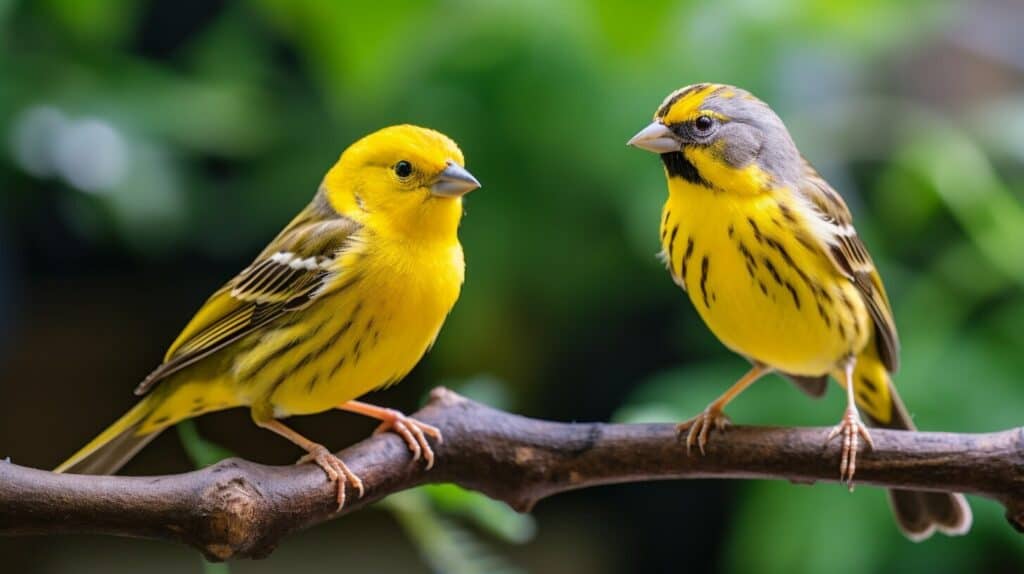
Other Potential Companions
While Budgerigars, Lovebirds, Cockatiels, and canaries/finches are some of Kakarikis’ most popular bird companions, several other species are worth considering. However, it’s important to note that not all species will be compatible, and introducing new birds requires careful observation and monitoring.
Some other potential companions for Kakarikis include:
| Bird Species | Compatibility |
|---|---|
| Green Cheek Conures | Compatible if introduced when young; similar size and temperament; require similar diet and living environment. |
| Quaker Parrots | May be compatible with Kakarikis if introduced when young; similar size and diet preferences; both active and playful. |
| Canary-winged Parakeets | Compatible if introduced when young; similar size and temperament; both enjoy social interaction. |
If considering other bird species, it’s essential to research their behaviour, diet, and living requirements before introducing them to your aviary. Introducing new birds gradually is also recommended, allowing for supervised interaction and monitoring for signs of stress or aggression.
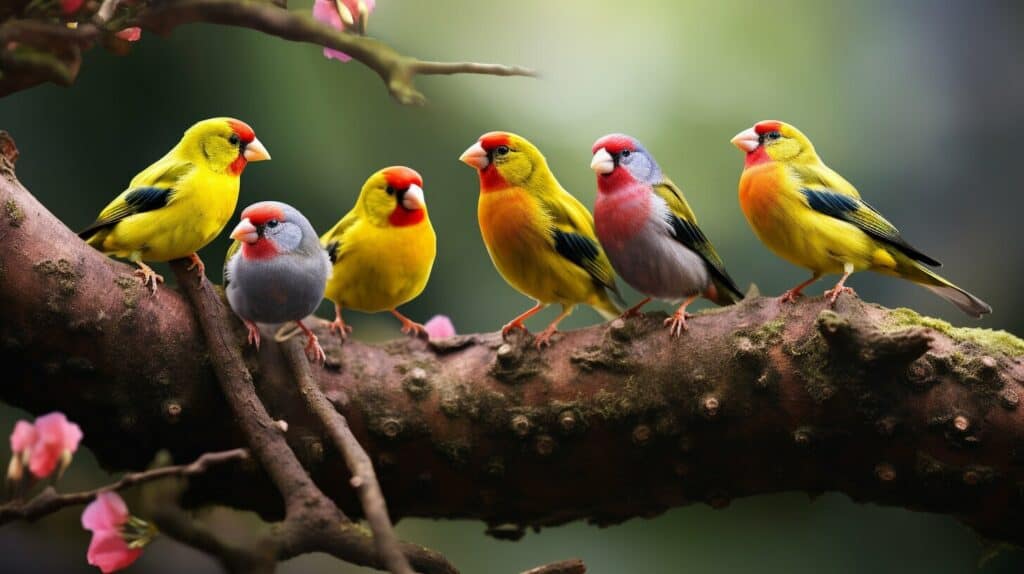
Housing Options for Kakarikis and Companions
Providing a suitable living environment is key to maintaining the health and happiness of all birds in an aviary. When housing Kakarikis with other bird species, it is important to consider their size, activity level, and specific needs.
The size of the aviary will depend on the number of birds housed within it. A good rule of thumb is to provide at least 40 cubic feet of space for each pair of birds. This ensures that each bird has enough space to move freely and exercise.
The design of the aviary is also important. The cage should be made of sturdy materials and have plenty of perches, hiding places and toys to keep the birds mentally stimulated. It is also important to have separate feeding and drinking stations for each species to prevent aggression and competition.
When introducing new birds to an established Kakariki aviary, a quarantine period is necessary to ensure the newcomers don’t bring any diseases or infections. The quarantine period should last for at least 30 days, during which the new birds should be housed in a separate cage and monitored closely for signs of illness.
Providing a neutral space for the birds to interact before being housed together is important during the introduction process. This can be done by placing the cages next to each other and gradually moving them closer over several days.
Additionally, it is essential to have multiple perches and feeding stations to minimize competition between the birds. This allows each bird to have space and reduces the likelihood of conflict or aggression.
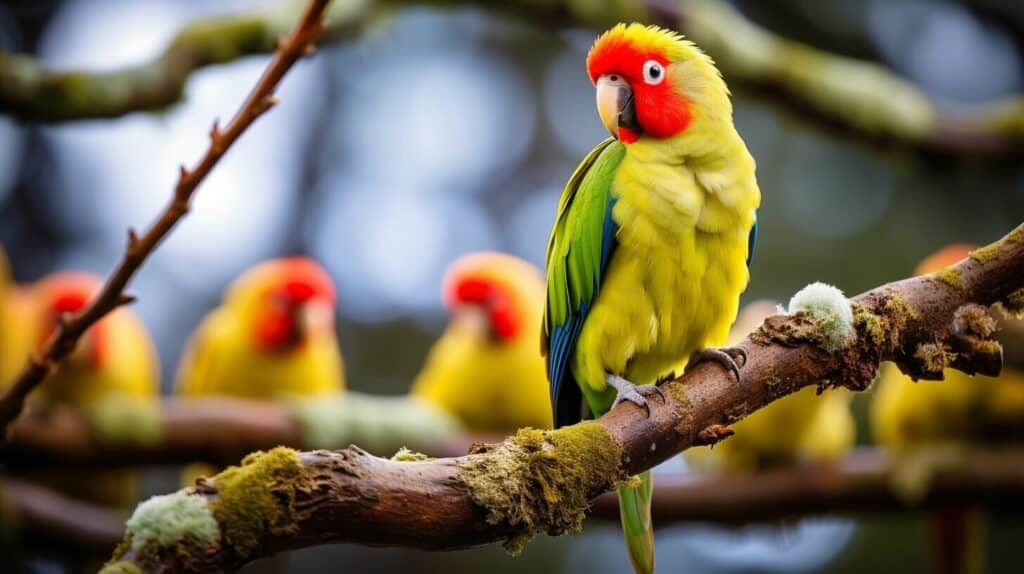
Introducing New Birds to an Aviary
Introducing new birds to an established Kakariki aviary can be a delicate process that requires careful consideration and preparation. To minimize stress and potential conflicts, it’s essential to follow some basic guidelines:
- Quarantine the new birds for at least 30 days before introducing them to the existing flock. This will allow you to detect any signs of illness or disease and prevent the spread of infection to the other birds.
- Choose a neutral territory for the introduction, such as a separate aviary or a temporary enclosure within the main aviary. This will prevent territorial aggression and allow the birds to get acquainted in a non-threatening environment.
- Monitor the birds closely during the introduction, and be prepared to intervene if necessary. Signs of aggression, such as vocalization, fluffing up, or pecking, are normal during the introduction process, but if you notice any signs of injury or extreme stress, separate the birds immediately.
- Provide multiple feeding and watering stations to prevent competition for resources. This will reduce stress and tension during the introduction and help the birds form positive associations with each other.
- Gradually increase the duration of supervised visits, starting with short periods and gradually extending them over several days. This will allow the birds to become accustomed to each other’s presence and behaviour without feeling overwhelmed or threatened.
Remember to be patient and observe the birds closely during the introduction process. With the right approach and supervision, new birds can be integrated into an established Kakariki aviary.
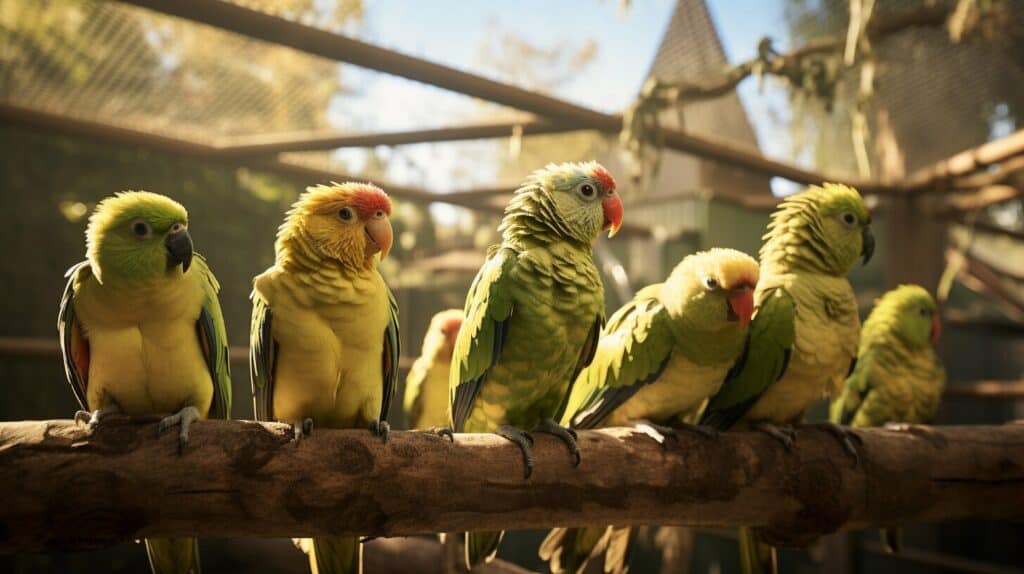
Observing and Maintaining Bird Relationships
After introducing new companions to Kakarikis, it is crucial to observe their relationships carefully. Keeping a watchful eye can help identify any conflicts or issues.
Observation Tips:
- Watch for any aggressive behaviour, such as biting or chasing.
- Observe how birds interact during feeding and drinking times.
- Pay attention to sleeping arrangements and whether birds are comfortable sleeping nearby.
- Ensure all birds have access to food and water and that no one bird is monopolizing resources.
If any conflicts or issues do arise, address them immediately. Removing the bird(s) causing the problem may be necessary, but this should be a last resort after all other methods have been exhausted.
Tips for Maintaining Harmony:
- Provide plenty of space for all birds to move around and avoid overcrowding.
- Offer a variety of perches and toys to keep birds mentally stimulated.
- Keep the aviary clean and hygienic to prevent the spread of disease.
- Ensure all birds have access to food and water and monitor their diets carefully.
By observing and maintaining bird relationships, pet owners can ensure a peaceful and harmonious environment for their Kakarikis and their companions.
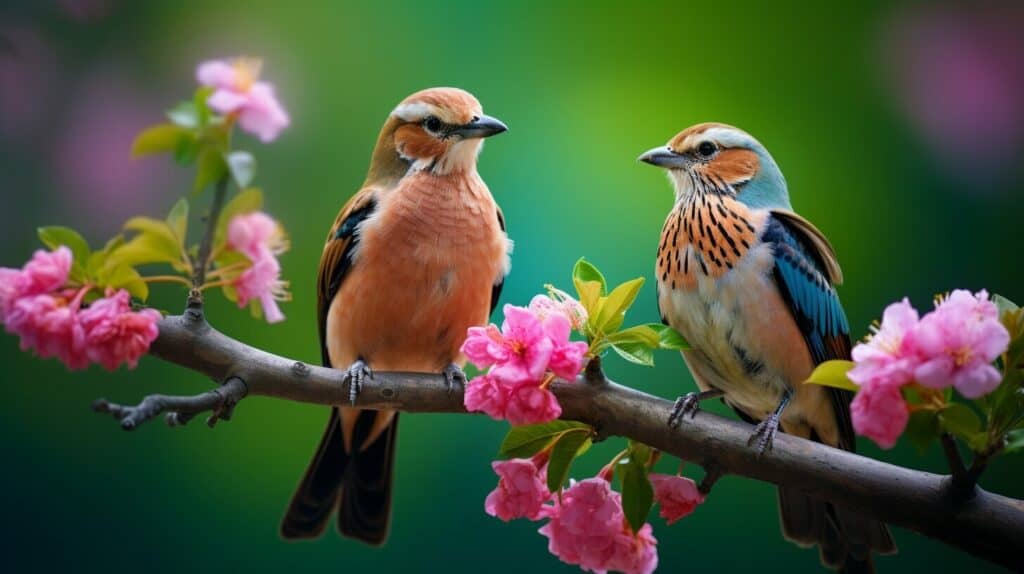
Common Challenges and Troubleshooting
While keeping Kakarikis with other bird species can be a rewarding experience, challenges may arise occasionally. One common issue is aggression between birds, which can lead to injuries or stress. To address this, it’s important to provide enough space for each bird and to monitor their behaviour closely for any signs of conflict.
If aggression does occur, separating the birds temporarily may be necessary. This can be done by partitioning the aviary or moving one bird to temporary housing until the situation is resolved. Additionally, introducing new birds slowly and with care can reduce the likelihood of conflicts.
Another challenge that pet owners may face is diet management, especially if they keep multiple bird species with different dietary requirements. To prevent any nutritional deficiencies or excesses, it’s important to provide a balanced diet for each bird and monitor their intake to ensure they eat appropriately.
Finally, health issues can arise in any bird population, and it’s important to be vigilant for signs of illness or disease. Regular check-ups with an avian veterinarian and good hygiene practices can help prevent the spread of disease and ensure the ongoing health of all birds in the aviary.
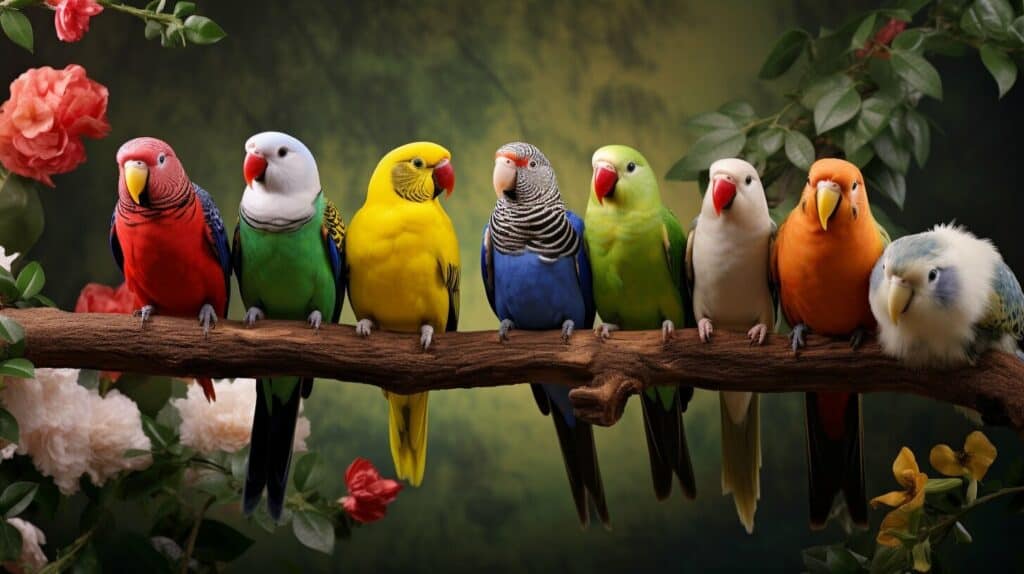
Pet owners can ensure a harmonious living environment for Kakarikis and their feathered companions by being prepared for common challenges and addressing them quickly and effectively.
Aviary Enrichment and Socialization
Creating an environment that embodies the natural behaviour of birds is essential for their overall well-being. An enriched space with diverse activities and toys can promote healthy physical and mental stimulation.
For Kakarikis and their companions, ensuring they have adequate space to fly and exercise is crucial. In addition, offering various perching options and hiding places can create a dynamic and exciting environment for the birds to explore.
Introducing different toys and puzzles can also enhance the birds’ cognitive abilities and keep them entertained. Providing natural perches like branches or twigs can also help maintain their beaks and claws in good condition.
Furthermore, socializing birds is a crucial aspect of their development. Kakarikis and their companions benefit from spending time with their kind while interacting with different species. This helps them build strong bonds and develop social skills, mimicking their natural behaviour in the wild.
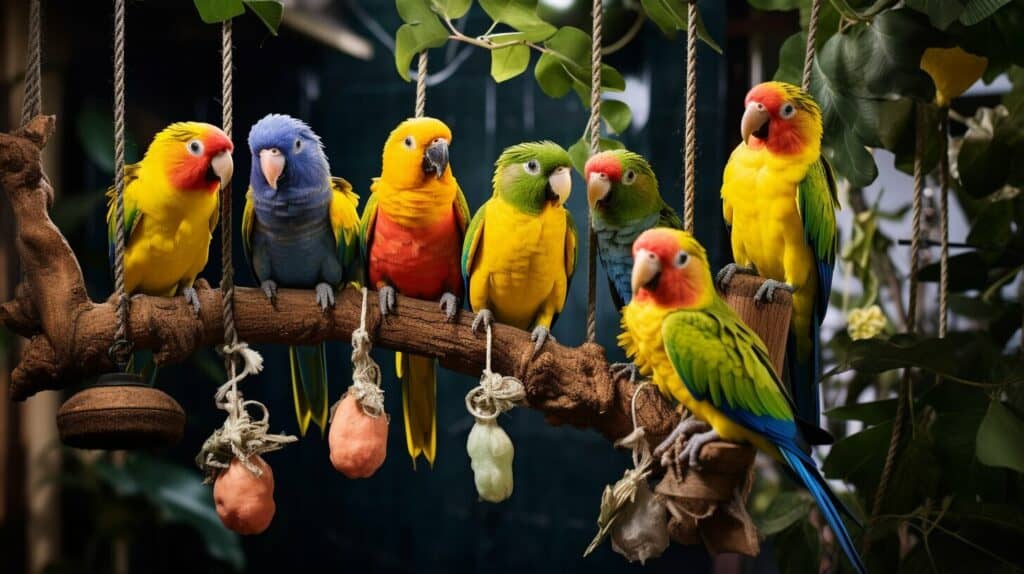
Offering various perching and feeding stations can encourage birds to interact with each other, promoting positive relationships. Birds that socialize and interact with different species are likelier to exhibit natural behaviours like preening or vocalizing.
Creating a vibrant environment for Kakarikis and their companions can promote their overall well-being. Offering various physical and mental activities can encourage them to exhibit natural behaviours and build strong bonds with each other.
Conclusion
Kakarikis are social birds that thrive in the company of other birds. By understanding their social and physical characteristics, pet owners can choose compatible bird species that coexist peacefully with Kakarikis.
Budgerigars, lovebirds, cockatiels, canaries, and finches are popular choices, but there are other suitable companions to consider. When housing Kakarikis and their companions together, it’s important to create an enriched living environment that promotes positive bird interactions and well-being.
Introducing new birds to an aviary requires careful consideration and proper introduction techniques, and monitoring ongoing bird relationships is crucial to maintaining harmony. Common challenges may arise, but troubleshooting tips can help resolve conflicts and promote peaceful coexistence.
In conclusion, pet owners can create a thriving aviary where multiple bird species coexist harmoniously by considering their social and physical characteristics, choosing suitable companions, and providing an enriched environment. With the right knowledge and care, Kakarikis and their companions can enjoy a fulfilling and happy life together.
FAQ
Q: What bird species can live with Kakarikis?
A: Several bird species can live harmoniously with Kakarikis. Some popular choices include Budgerigars (Budgies), Lovebirds, Cockatiels, and various canary and finch species.
Q: What are the social and physical characteristics of Kakarikis?
A: Kakarikis are social birds that thrive on interaction with other species. They have vibrant plumage, playful personalities and are known for their acrobatic abilities.
Q: How do I choose compatible birds for Kakarikis?
A: When choosing bird companions for Kakarikis, consider size, temperament, and dietary preferences. Selecting birds with compatible characteristics and can coexist peacefully is important.
Q: What are some popular bird companions for Kakarikis?
A: Budgerigars (Budgies), Lovebirds, Cockatiels, and canary and finch species are some of the most popular bird companions for Kakarikis. These species have shown compatibility and can form strong bonds with Kakarikis.
Q: Can Budgerigars (Budgies) live with Kakarikis?
A: Budgerigars (Budgies) are known to make suitable companions for Kakarikis. They have similar social dynamics and can coexist peacefully when introduced properly.
Q: Can Lovebirds live with Kakarikis?
A: Lovebirds can coexist with Kakarikis under the right conditions. While Lovebirds are known for their close bonds with their species, they can form relationships with Kakarikis if introduced gradually and provided with ample space.
Q: Can Cockatiels live with Kakarikis?
A: Yes, Cockatiels can make excellent companions for Kakarikis. They are intelligent and sociable birds that can form strong bonds with Kakarikis in an aviary setting.
Q: Can canaries and finches live with Kakarikis?
A: Canaries and finches can coexist peacefully with Kakarikis. Their small size and active nature make them compatible companions for Kakarikis in an aviary environment.
Q: What other bird species can live with Kakarikis?
A: Besides the more popular choices, several other bird species can be compatible with Kakarikis. Some examples include Parrotlets, Bourke’s Parrots, and Green-Cheeked Conures.
Q: What are the housing options for Kakarikis and their companions?
A: When housing Kakarikis and their companions, providing adequate space and separate areas for each species is important. Aviaries with multiple levels and flight cages are suitable options.
Q: How do I introduce new birds to a Kakariki aviary?
A: Introducing new birds to an established Kakariki aviary requires proper introduction techniques. Gradual introductions and supervised interactions can help minimize stress and promote a smooth transition.
Q: How can I maintain harmony between birds in an aviary?
A: Observing bird relationships and ensuring ongoing harmony is essential. Provide ample food, water, and perching options to prevent resource competition and monitor bird interactions to identify and address conflicts.
Q: What are some common challenges when keeping Kakarikis with other bird species?
A: Common challenges may include territorial disputes, mating behaviours, and resource guarding. These issues can be resolved by providing adequate space, enrichment, and attention to each bird’s needs.
Q: How can I enrich an aviary with multiple bird species?
A: Enriching the aviary environment is crucial for the well-being of all birds. Provide a variety of perches, toys, and mental stimulation activities to keep the birds engaged and promote positive social interactions.
Q: Conclusion
In conclusion, several bird species can live harmoniously with Kakarikis. Pet owners can create a thriving aviary where multiple bird species coexist in harmony by considering their social and physical characteristics, choosing suitable companions, and providing an enriched environment.

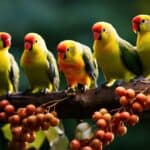
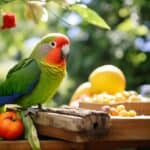
Have comments or questions about this article? Then get involved!
Spotted an error or something we have missed? Let us know